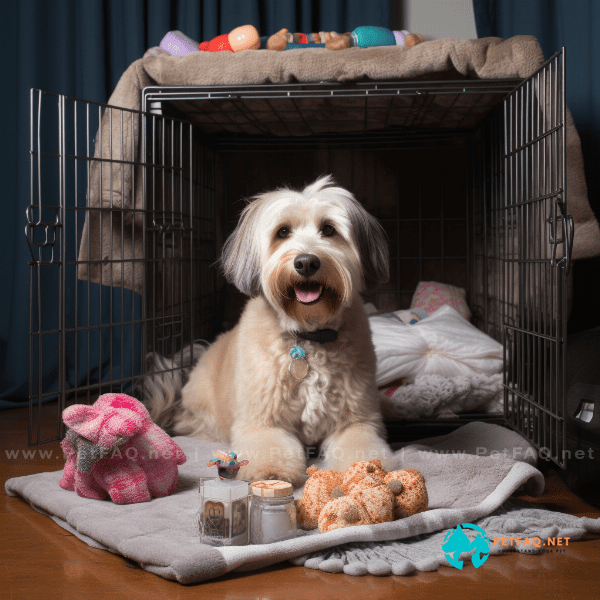Crate training is a valuable tool for dog owners, as it provides a safe and comfortable space for the dog to rest and relax. However, some dogs may have had negative experiences with crates in the past, such as being confined for extended periods or being forced into a crate. If you have a dog with a history of negative experiences with crates, here are some tips on how to crate train them:
1. Choose the right crate: It’s important to select the right type of crate for your dog. Choose a crate that is the appropriate size for your dog, with enough space for them to stand up, turn around, and lie down comfortably. If your dog has a negative association with a particular type of crate, try a different style or material.
2. Make the crate a positive space: Help your dog associate the crate with positive experiences by placing it in an area where they feel comfortable and happy, such as a sunny spot or near their favorite toys. Encourage your dog to explore the crate by placing treats or toys inside, and allow them to investigate the crate on their own terms.
3. Gradual introduction: It’s important to introduce the crate gradually, in small steps. Start by leaving the crate door open and allowing your dog to explore the crate at their own pace. Once they are comfortable being inside the crate, start closing the door for short periods while you are in the room. Gradually increase the amount of time your dog spends in the crate, and begin leaving the room while they are inside.
4. Positive reinforcement: Reward your dog with treats and praise when they enter the crate voluntarily, and when they stay inside calmly. This will help them associate the crate with positive experiences and make them more likely to use it willingly.
5. Be patient: It’s important to be patient and understanding when crate training a dog with a history of negative experiences. Take things slowly, and be prepared to make adjustments to your training plan if necessary. Never force your dog into the crate, as this will only reinforce their negative association with it.
In conclusion, crate training a dog with a history of negative experiences with crates requires patience, understanding, and a willingness to make adjustments to your training plan. By following these tips and taking things slowly, you can help your dog overcome their negative association with crates and create a positive, safe space for them to rest and relax.
Read more:Crate Training a Dog: The Essentials

Related Questions
- How do you potty train a puppy as part of obedience training?
- How can I teach my dog to not pull on the leash during walks?
- What are some free tips for teaching my dog to not bark excessively?
- How can you train a hunting dog to work with other dogs and hunters in the field?
- Canadian Working Dog Federation (CWDF): This organization offers Schutzhund/IPO/IGP titles and competitions for several breeds in Canada.
